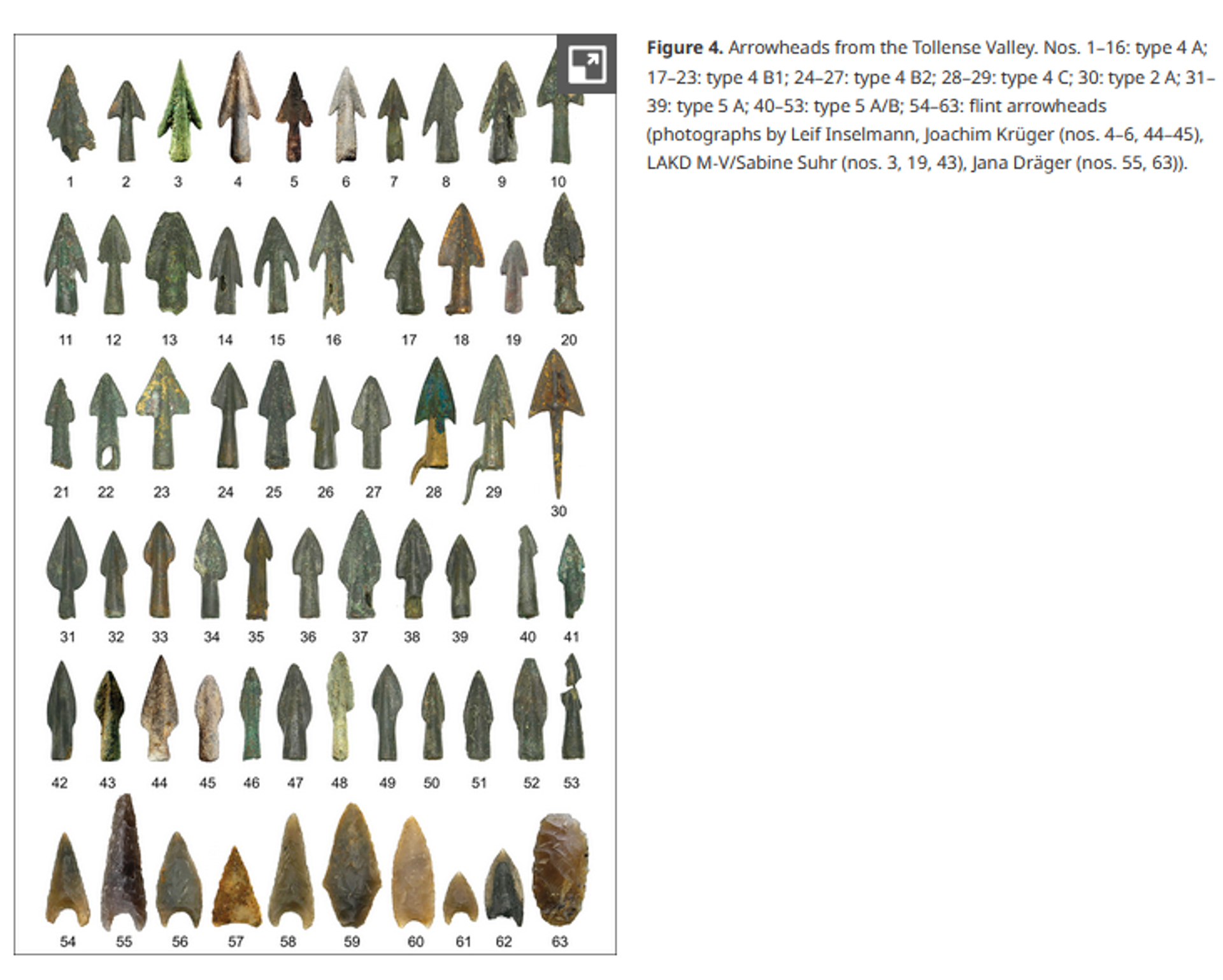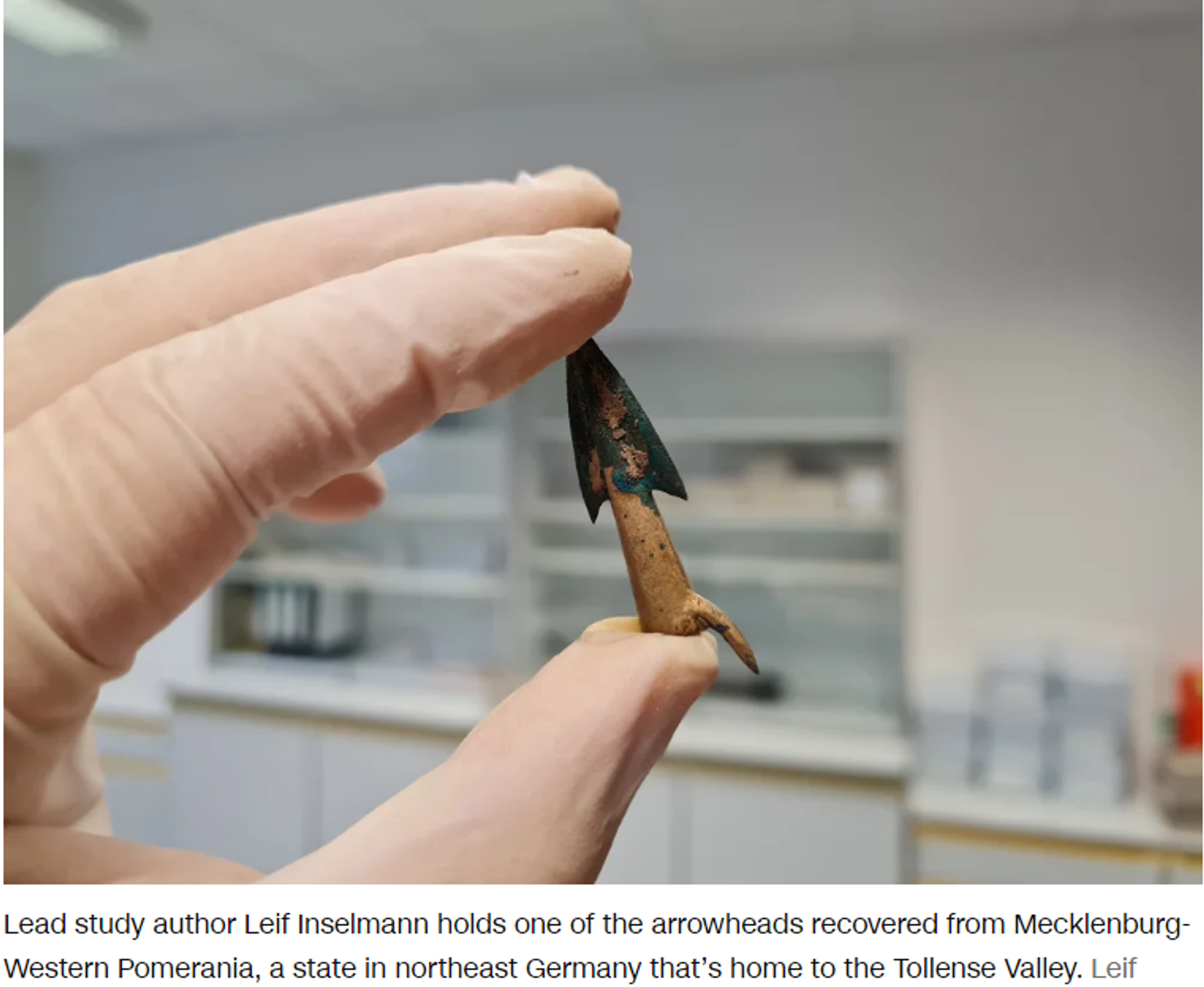https://sputnikglobe.com/20241006/ancient-skeletons--arrowheads-became-smoking-gun-in-mystery-of-europes-oldest-known-battlefield-1120444413.html
Ancient Skeletons & Arrowheads Became 'Smoking Gun' in Mystery of Europe's Oldest-Known Battlefield
Ancient Skeletons & Arrowheads Became 'Smoking Gun' in Mystery of Europe's Oldest-Known Battlefield
Sputnik International
While the Tollense river valley in north-eastern Germany is currently is now an idyllic pastoral scene of lush green meadows, the mysteries of its torrid past are being gradually unraveled by archeologists and researchers.
2024-10-06T14:42+0000
2024-10-06T14:42+0000
2024-10-06T14:42+0000
beyond politics
science & tech
bronze age
germany
europe
central europe
history
archaeology
https://cdn1.img.sputnikglobe.com/img/07e8/0a/06/1120445344_14:0:905:501_1920x0_80_0_0_42d23e6a521ddff94c5ca1d3ad4fc75f.png
Germany’s Tollense river valley was the scene of Europe's oldest known battle, new research published in the journal Antiquity suggests.Ground-breaking new analysis of dozens of bronze and flint arrowheads found there, along with the discovery of bones from some 150 individuals, tells a story of a brutal conflict that erupted in 1250 BC.To date, no evidence of earlier battles of such tremendous scale has been unearthed.The site was discovered in 1996 by an amateur archaeologist who spotted a bone sticking out of the mud. Numerous excavations have been made at the Tollense site since then. The find of large numbers of arrowheads was the "smoking gun" in the mystery of the earliest-known inter-regional war in Europe, noted lead study author Leif Inselmann."Just like the murder weapon in a mystery, they give us a clue about the culprit, the fighters of the Tollense Valley battle and where they came from,” said the researcher at the Berlin Graduate School of Ancient Studies of the Free University of Berlin, in a press statement.When Inselmann and his team analyzed the finds and compared them with samples of over 4,700 Bronze Age arrowheads from Central Europe, they discovered that outsiders had fought at this site."This suggests that at least a part of the fighters or even a complete battle faction involved in Tollense Valley derive from a very distant region,” Inselmann said.Skeletal remains suggest that over 2,000 people — mainly young men — fought in the battle, according to the study."This new information has considerably changed the image of the Bronze Age, which was not as peaceful as believed before," said study co-author Thomas Terberger, a professor in the department of prehistoric and historical archaeology at Germany’s University of Göttingen. "The 13th century BC saw changes of burial rites, symbols and material culture," Terberger explained. "I consider the conflict as a sign that this major transformation process of Bronze Age society was accompanied by violent conflicts. Tollense is probably only the tip of the iceberg,”
https://sputnikglobe.com/20231019/amateur-metal-detectorist-finds-treasure-trove-of-bronze-age-jewelry-in-carrot-field-1114307053.html
germany
central europe
Sputnik International
feedback@sputniknews.com
+74956456601
MIA „Rossiya Segodnya“
2024
News
en_EN
Sputnik International
feedback@sputniknews.com
+74956456601
MIA „Rossiya Segodnya“
Sputnik International
feedback@sputniknews.com
+74956456601
MIA „Rossiya Segodnya“
what was the earliest supra-regional battle in europe, where was europe's oldest-known battlefield.
what was the earliest supra-regional battle in europe, where was europe's oldest-known battlefield.
Ancient Skeletons & Arrowheads Became 'Smoking Gun' in Mystery of Europe's Oldest-Known Battlefield
While the Tollense river valley in north-eastern Germany is currently is now an idyllic pastoral scene of lush green meadows, the mysteries of its torrid past are being gradually unraveled by archeologists and researchers.
Germany’s Tollense river valley was the scene of Europe's oldest known battle, new research
published in the journal
Antiquity suggests.
Ground-breaking new analysis of dozens of bronze and flint arrowheads found there, along with the discovery of bones from some 150 individuals, tells a story of a brutal conflict that erupted in 1250 BC.
To date, no evidence of earlier battles of such tremendous scale has been unearthed.
The site was discovered in 1996 by an amateur archaeologist who spotted a bone sticking out of the mud. Numerous excavations have been made at the Tollense site since then.
The find of large numbers of arrowheads was the "smoking gun" in the mystery of the earliest-known inter-regional war in Europe, noted lead study author Leif Inselmann.
"Just like the murder weapon in a mystery, they give us a clue about the culprit, the fighters of the Tollense Valley battle and where they came from,” said the researcher at the Berlin Graduate School of Ancient Studies of the Free University of Berlin, in a press statement.
When Inselmann and his team analyzed the finds and compared them with samples of over 4,700 Bronze Age arrowheads from Central Europe, they discovered that outsiders had fought at this site.
"This suggests that at least a part of the fighters or even a complete battle faction involved in Tollense Valley derive from a very distant region,” Inselmann said.
Skeletal remains suggest that over 2,000 people — mainly young men — fought in the battle, according to the study.
"This new information has considerably changed the image of the Bronze Age, which was not as peaceful as believed before," said study co-author Thomas Terberger, a professor in the department of prehistoric and historical archaeology at Germany’s University of Göttingen.
"The 13th century BC saw changes of burial rites, symbols and material culture," Terberger explained. "I consider the conflict as a sign that this major transformation process of Bronze Age society was accompanied by violent conflicts. Tollense is probably only the tip of the iceberg,”

19 October 2023, 04:00 GMT





